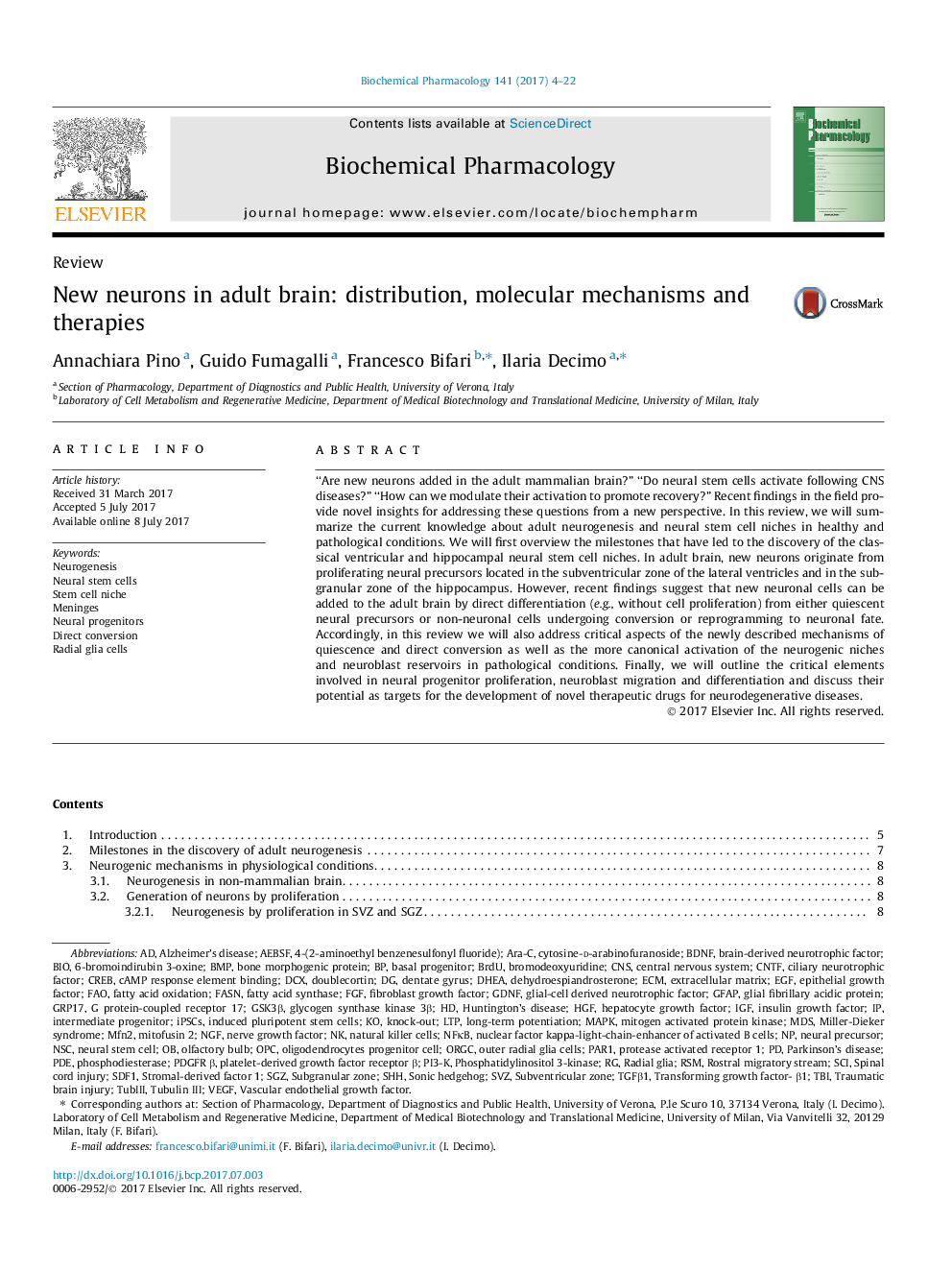| کد مقاله | کد نشریه | سال انتشار | مقاله انگلیسی | نسخه تمام متن |
|---|---|---|---|---|
| 5551949 | 1557872 | 2017 | 19 صفحه PDF | دانلود رایگان |
“Are new neurons added in the adult mammalian brain?” “Do neural stem cells activate following CNS diseases?” “How can we modulate their activation to promote recovery?” Recent findings in the field provide novel insights for addressing these questions from a new perspective. In this review, we will summarize the current knowledge about adult neurogenesis and neural stem cell niches in healthy and pathological conditions. We will first overview the milestones that have led to the discovery of the classical ventricular and hippocampal neural stem cell niches. In adult brain, new neurons originate from proliferating neural precursors located in the subventricular zone of the lateral ventricles and in the subgranular zone of the hippocampus. However, recent findings suggest that new neuronal cells can be added to the adult brain by direct differentiation (e.g., without cell proliferation) from either quiescent neural precursors or non-neuronal cells undergoing conversion or reprogramming to neuronal fate. Accordingly, in this review we will also address critical aspects of the newly described mechanisms of quiescence and direct conversion as well as the more canonical activation of the neurogenic niches and neuroblast reservoirs in pathological conditions. Finally, we will outline the critical elements involved in neural progenitor proliferation, neuroblast migration and differentiation and discuss their potential as targets for the development of novel therapeutic drugs for neurodegenerative diseases.
244
Journal: Biochemical Pharmacology - Volume 141, 1 October 2017, Pages 4-22
